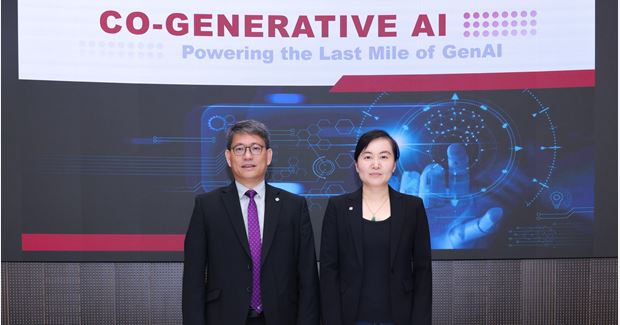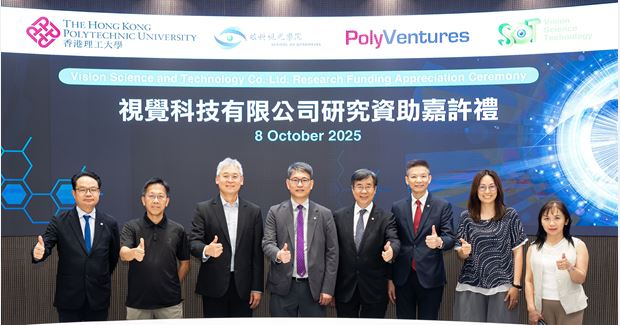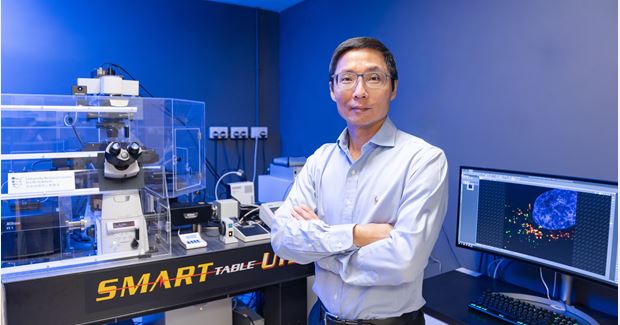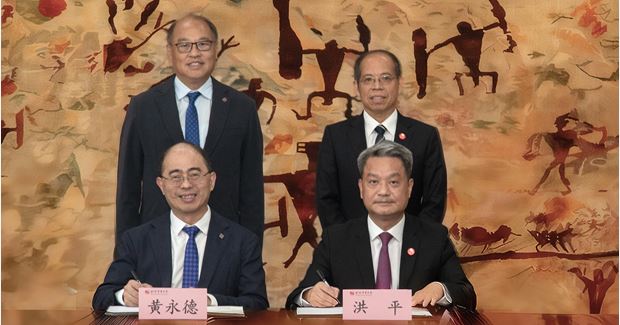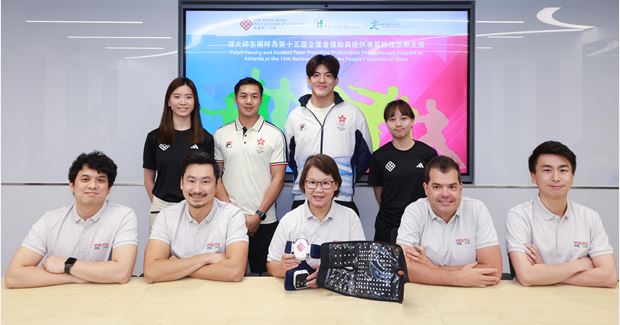PolyU develops an innovative multi-tier intelligent bridge inspection system to identify structural issues
24 Nov 2025
With Hong Kong’s transport infrastructure facing immense pressure from some of the world’s highest densities of traffic, ensuring bridge safety is more critical than ever. A research team at The Hong Kong Polytechnic University (PolyU) has unveiled a groundbreaking, intelligent bridge inspection system. This system can detect cracks and uncover hidden structural flaws invisible to the human eye. Deployed across 11 local bridges, this multi-tier system integrates PolyU’s proprietary non-destructive testing technologies (NDT) with advanced artificial intelligence (AI) models. The result: inspection times slashed by a significant margin of 50% and overall accuracy rate dramatically improved to 80%, paving the way for Citywide adoption.
Traditional infrastructure visual inspection (VI) methods in Hong Kong are labour-intensive, subjective and often miss subsurface defects like rebar corrosion, which necessitate road closures. Led by Prof. Tarek ZAYED, Professor of the PolyU Department of Building and Real Estate, the team’s innovation can replace these manual practices with a trio of cutting-edge tools: drones, ground-penetrating radar (GPR) and infrared thermography (IRT). These technologies collect comprehensive data from both the surface and subsurface of bridges, while AI models automate analysis for unprecedented accuracy and efficiency.
Surface crack identification is vital for structural health. Using drone-enabled VI and a self-developed deep convolutional neural network (CNN) model—Smart Bridge Deck Efficiency (SBDE)—the team has achieved superior crack detection, even in challenging conditions such as low light or shadows. SBDE outperformed other leading object detection models, reducing false positives and confusion with surface scratches.
Surface cracks often signal deeper issues like rebar corrosion, i.e., subsurface defects. The team’s fully automated GPR data interpretation model locates rebars with over 98% precision and maps potential corrosion zones using advanced amplitude analysis and clustering. The newly developed tool significantly streamlines the GPR-based corrosion assessment process, making it both faster and more straightforward.
Concrete deterioration, such as spalling and delamination, is another major concern. The team developed an optimum thermal gradient threshold (OTGT) system for IRT, adjusting thresholds based on environmental conditions for more accurate detection. Their smart OTGT-based model automatically generates delamination maps, further enhancing diagnostic capabilities.
“This hybrid system— for surface and subsurface defects—enhances both the efficiency and accuracy of bridge inspection through an integrated, AI-powered approach,” said Prof. Tarek Zayed. “We have also standardised inspections with a five-point severity scale to facilitate diagnosis and prioritise repairs. The comprehensive SBDE tool thoroughly assesses bridge conditions based on data collected from various sensing devices.”
He added, “We are currently exploring further collaboration with relevant government departments and industry partners to implement this system for regular bridge inspections in the City, marking a significant step towards smarter infrastructure management in Hong Kong. Our goal is to ensure that Hong Kong’s bridges remain safe and reliable for decades to come.”
This two-year project was supported by the Smart Traffic Fund. With findings published in leading international journals including Construction and Building Materials, Automation in Construction and Advanced Engineering Informatics, Prof. Zayed’s team is exploring ways to advance related technologies and further promote smart bridge inspection in Hong Kong.
***END***
Press Contacts
Ms Iris Lai
Manager, Research and Innovation Office
- 3400 2492
- syiris.lai@polyu.edu.hk
Press Contacts
Ms Hazel Cheng
Assistant Manager, Public Affairs
- 2766 4570
- hazel-sy.cheng@polyu.edu.hk
You may also like










